I have been given the following question on finding the
transfer function from the following bode plot

I know that the transfer function should look like this \begin{equation} H\left(jw\right)\:=\:\frac{k}{\left(jw+10\right)\left(jw+100\right)\left(jw+1000\right)} \end{equation} but I don't know if am doing this right, also how to find the value for k. Thank you for your help.